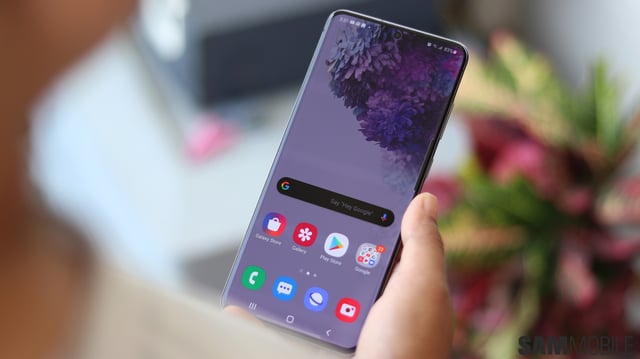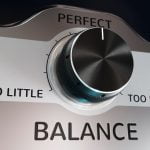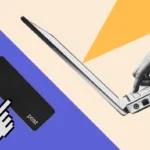
I’m happy to report that the S20 delivers few surprises, which makes it all the more likely that you’ll skip past it. That would be a mistake. There will be other Android phones that meet or exceed the Galaxy S20 on any number of metrics or specs, of course. But I’m confident predicting that few — perhaps none — will match the overall experience. The Galaxy S is the default Android phone for a reason.
Unfortunately, the base price for the default has risen this year: $999.99 for the Galaxy S20 and $1,199.99 for the larger-screened Plus version. I suspect much of that cost comes down to the inclusion of 5G, from which not enough people will really benefit.
The Galaxy S20 and S20 Plus have a larger sibling, the Galaxy S20 Ultra. When I reviewed that phone last month, I found that Samsung overextended itself by trying to do too much. The regular S20 phones are trying to do less, so I think they end up accomplishing more.
Contents
HARDWARE
One of the main reasons you might take the S20 for granted is that it looks so similar to other recent Galaxy S phones. There’s the same curved glass on the back, the same metal rail on the edges, and the same nearly bezel-less screen with just a tiny hole punch for the selfie camera.
The most notable difference is that Samsung followed Apple and Google in moving the camera module off to the side, letting it get big and squarish — though Samsung’s is a rectangle. A more subtle (and welcome) difference from previous Galaxy phones is that the screen is a bit less curved on the left and right sides.
Overall, I think there isn’t another Android phone that rises to this level of build quality. It simply feels like a nice object in either size. I prefer it to the iPhone in many ways, actually. For example, the regular Galaxy S20 is just a little narrower than the regular iPhone 11 Pro, so it feels more comfortable in the hand. Plus, you can get the small one in pink.
:no_upscale()/cdn.vox-cdn.com/uploads/chorus_asset/file/19784484/bking_200303_3928_0006.jpg)
:no_upscale()/cdn.vox-cdn.com/uploads/chorus_asset/file/19784485/bking_200304_3928_0008.jpg)
:no_upscale()/cdn.vox-cdn.com/uploads/chorus_asset/file/19784482/bking_200306_3928_0018.jpg)
Getting that massive, notch-less screen means that Samsung doesn’t have a secure face unlock feature. Instead, there’s an ultrasonic fingerprint sensor under the screen. I will admit it’s a small beat slower than other unlock methods, but it’s not slow enough to really bother me. I found it only took a few days to build up the muscle memory to put my thumb in the right spot.
Samsung dropped the headphone jack this year, which is noteworthy because it was still a selling point for the Galaxy S10. Fortunately, it is leaving the ability to expand storage with a microSD card, which is important because the smaller Galaxy S20 only comes with one storage option: 128GB. That’s too low for a thousand-dollar phone, but it’s better than what you get on an iPhone 11 Pro. Getting 512GB of storage on the S20 Plus costs $1,349.99.
Really, all of these details are de rigueur for Samsung: top-shelf hardware quality, higher pricing than the Android competition. But there are three things that are noteworthy on the S20: the new cameras, 5G speeds, and the option to set a 120Hz refresh rate on the screen.
:no_upscale()/cdn.vox-cdn.com/uploads/chorus_asset/file/19784453/bking_200306_3928_0015.jpg)
CAMERA
Let’s start with the camera. If you saw the Galaxy S20 Ultra review, you were “treated” to a long, complicated exegesis on Samsung’s big bet on high megapixel sensors and how that bet didn’t really pay off. Fortunately, the regular Galaxy S20 and S20 Plus take a much more traditional approach. They may be less ambitious, but at least they’re more predictable.
The main camera sensor is a simple 12-megapixel sensor, though it’s apparently 28 percent larger than the main sensor on last year’s Galaxy S10. I believe it, if only because the S20 does surprisingly well in very dim light. The wide-angle sensor is also 12 megapixels, and the selfie camera is 10 megapixels. All pretty standard stuff.
:no_upscale()/cdn.vox-cdn.com/uploads/chorus_asset/file/19784662/20200304_20200304_122339.jpg)
The telephoto is 64-megapixels, however. As with the Ultra, Samsung is using these extra megapixels to improve zoom capabilities. In fact, that’s the main way the zoom works: by cropping in on that larger sensor so you can still get 12-megapixel images out of it. The field of view on the telephoto is close enough to the wide-angle that you can use it to take regular 64-megapixel photos if you’re so inclined.
I think the Galaxy S20 and S20 Plus take great photos, but there are some caveats to be aware of. Every smartphone camera has a “look,” meaning its software is opinionated on how images should be tuned. Samsung’s look is to warm up the white balance, lighten shadows whenever possible, and smooth out faces.
:no_upscale()/cdn.vox-cdn.com/uploads/chorus_asset/file/19784658/modes.jpg)
I do not like this look, and the face smoothing, in particular, is grating — not because it smears out details but because there’s no way to turn it off when you’re in regular Auto mode. There’s also a “Bixby scene detection” mode that makes things worse as often as it improves them. Fortunately, I think because the S20 has a regular 12-megapixel camera instead of a 108-megapixel sensor, it tends to be a little less aggressive at doing all of the above. It’s still Samsung’s look, but it’s executed more competently than it is on the Ultra.
However, if you take a half-second to switch to Pro mode (or if you simply turn off the beauty filters on the selfie camera), the vast majority of these problems go away. Even with all of the ISO and white balance and other camera settings set to “auto” inside Pro mode, the camera just spits out a more neutral and detailed photo.
:no_upscale()/cdn.vox-cdn.com/uploads/chorus_asset/file/19784746/20200304_20200304_120738.jpg)
:no_upscale()/cdn.vox-cdn.com/uploads/chorus_asset/file/19784665/00000000_20200304_120629.jpg)
:no_upscale()/cdn.vox-cdn.com/uploads/chorus_asset/file/19784661/20200304_20200304_122203.jpg)
Basically, if Samsung would get out of its own way, this camera would be a serious contender to take on both the iPhone 11 Pro and Pixel 4 for regular shots. As it currently stands, though, it falls just short of those phones. However, I will say I like the S20 as a total package better than the Pixel 4 because Samsung offers a wide-angle lens and has better video.
I was also hard on the S20 Ultra because it had a hard time catching focus. I haven’t had that problem with the S20 at all. Perhaps that’s because the regular S20 and S20 Plus have that more traditional sensor with a more traditional dual-pixel autofocus. It’s especially notable in video where focus-hunting can be super annoying. Overall, I think Samsung still leads the Android pack when it comes to video quality, but it trails the iPhone.
:no_upscale()/cdn.vox-cdn.com/uploads/chorus_asset/file/19784657/zoom.jpg)
The S20 and S20 Plus don’t have the Ultra’s fancy folded lens with its prisms and mirrors, but Samsung still says you can get “lossless” zoom up to 3x, and it gives you the option to zoom all the way up to 100x. This all works primarily by cropping in on that big 64-megapixel sensor. The results are all right but not good enough to buy the phone for that. I think at around 3 or 4x, it beats out both the Pixel and the iPhone 11 Pro, but all three break down pretty hard beyond that.
Lastly, if you were thinking you wanted to buy the Galaxy S20 Plus because it has a time-of-flight “depth vision” sensor, don’t bother. I found that it didn’t help the Galaxy S20 Plus take better portrait photos. Both phones netted out about the same, which is to say they look fairly artificial to me, but sometimes you can get something special.
:no_upscale()/cdn.vox-cdn.com/uploads/chorus_asset/file/19784469/bking_200306_3928_0012.jpg)
5G, PERFORMANCE, AND SOFTWARE
The Galaxy S20 and S20 Plus are the first mainstream 5G phones, and that fact is a huge part of their marketing push. Unfortunately, the carriers I have to test on in the Bay Area — T-Mobile and Verizon — don’t offer 5G service here yet.
Even if you do live in a 5G area for your carrier, I’m far from convinced that the extra cost that 5G adds to the phone is worth it. In fact, given how quickly Samsung phones are discounted, if this phone interests you, it might be worth waiting for a sale price to switch up to it.
One thing to be aware of is that only the larger Galaxy S20 Plus and Ultra support the mmWave version of 5G. That’s the kind that only works if you are within a stone’s throw of and have line of sight to a cell tower. It’s much faster, but I still think of it as a street corner tech demo, not a real consumer technology.
:no_upscale()/cdn.vox-cdn.com/uploads/chorus_asset/file/19784490/bking_200306_3928_0013.jpg)
:no_upscale()/cdn.vox-cdn.com/uploads/chorus_asset/file/19784491/bking_200303_3928_0004.jpg)
One reason you should consider the S20 Plus — beyond the larger screen — is the larger battery. It’s 4,500mAh to the smaller S20’s 4,000mAh. I mainly tested the smaller one to get a sort of worst-case scenario, and the worst case is… pretty great. Although I wasn’t on 5G, I did have the battery-sucking 120Hz screen refresh rate on and could get through a full day of moderate to heavy use without issue. My screen time regularly topped five hours. My colleague Brennan tested the larger Plus model and got even better results.
The only Android phone that’s faster than the Galaxy S20 is probably the Galaxy S20 Ultra. They all have the latest Qualcomm Snapdragon 865 processor and plenty of RAM.
I commented on Samsung’s software in the Ultra review, but it bears repeating here: Samsung is losing some of the restraint it once had when it comes to piling on confusing features. I don’t want to begrudge any company’s attempt to build an ecosystem of services in the age of near-monopolies from Google, Apple, and Microsoft, but Samsung’s ecosystem isn’t great. Too many features are only compatible with other Galaxy phones, while others — Bixby, especially — are subpar at best. I turned off many of Samsung’s features, including the nearly pointless “Samsung Daily” section of the home screen.
The upside to all of these features is that you can customize lots of things to your preferences. Android and Samsung are open enough to allow things that would never fly on the iPhone. For example, I use an app called sideActions to remap a long-press of the power button from Bixy to Google Assistant. Imagine being able to sub something in for Siri on the iPhone.
It seems likely that Samsung will be on this pendulum swing between software bloat and cleanup forever. The S20 isn’t bloated at all yet, but I see the direction the pendulum is going. Fortunately, the foundation of Samsung’s One UI interface is still great. Its future, however, is clouded by the fact that Samsung will only commit to providing two major Android OS updates. This is a problem across all Android phones, but it’s particularly egregious with phones that cost well over a thousand dollars.
:no_upscale()/cdn.vox-cdn.com/uploads/chorus_asset/file/19784460/bking_200303_3928_0005.jpg)
THE BEST SCREEN
I’ve saved what is probably my favorite feature on the Galaxy S20 and S20 Plus for last: the screen — specifically, the option to switch it to a 120Hz refresh rate, which is double the normal rate. Doing so means animations and scrolling are much smoother.
Samsung’s implementation simply locks the screen to that faster refresh rate, while other implementations try to vary it depending on certain signals. Ideally, Samsung would do the same, but it likely is the sort of thing that requires significant software effort and, honestly, would be better handled by Android than Samsung. Luckily, as I noted above, switching to 120Hz wasn’t nearly enough to kill the battery in a single day, so Samsung’s approach works.
Perhaps in a bid to save battery, the S20 does ratchet down the screen resolution from the maximum when you set the refresh rate to 120Hz. I hardly noticed the difference, and you likely won’t either. Even if you do, the trade-off is worth it. High refresh rate screens should be expected on any phone that costs over a thousand dollars from here on out. They’re that good.
Beyond the refresh rate, the screen is great. It’s big and bright and vibrant on both sizes of the phone. I set the color tuning to “natural” because the default “vivid” mode made colors look oversaturated and weird.
:no_upscale()/cdn.vox-cdn.com/uploads/chorus_asset/file/19784470/bking_200304_3928_0009.jpg)
Samsung decided to call this phone the “Galaxy S20” instead of the Galaxy S11. Was it because it didn’t want to be a number behind the iPhone 12, which is presumably coming later this year? Signs obviously point to yes, but Samsung claims it chose the name because it wanted to signal that the S20 is the start of a new generation of phones.
There are two reasons Samsung thinks it can make that claim: 5G and the new camera system. But I still think 5G is a wash right now; it’s not something to seek out. As for the camera system, while the Ultra version of this phone tries a lot of new things, the regular S20 and S20 Plus are fundamentally evolutionary updates on what Samsung did with the S10.
I bought and used the Galaxy S10, and so I have a pretty solid frame of reference for the S20. Despite Samsung’s claims, it does feel more like an S11: a solid improvement over last year but not a “new generation” of phones. It’s also got too much of Samsung’s legacy of limiting software updates in it to be the start of something genuinely new.
But as I have been saying, don’t take solid improvements for granted. It’s the best complete package of an Android phone available right now and a high bar for the rest of 2020 Android phones to try to clear. S11, S20 — Samsung can call it whatever it wants.
[“source=theverge”]











